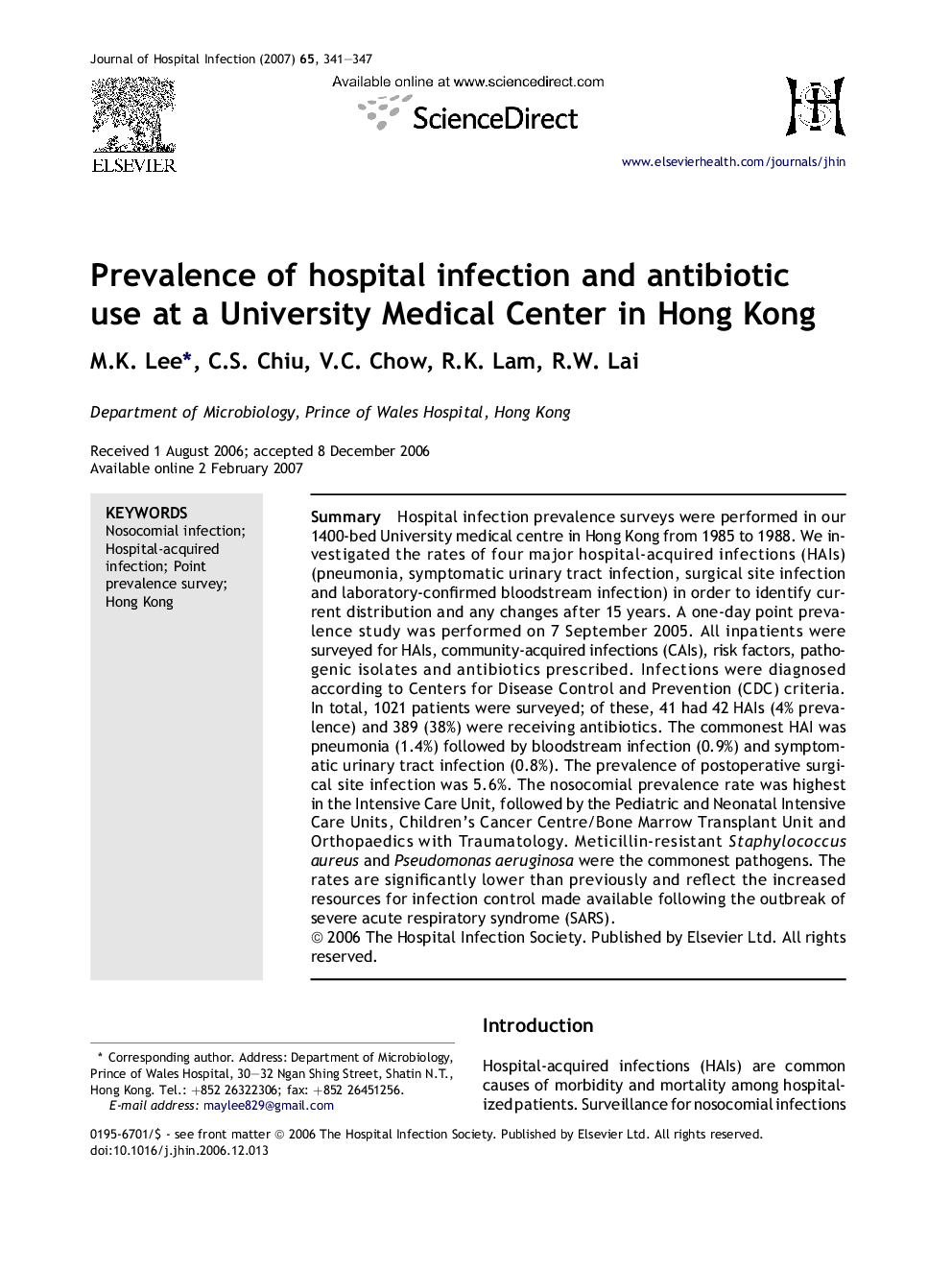| Article ID | Journal | Published Year | Pages | File Type |
|---|---|---|---|---|
| 3373797 | Journal of Hospital Infection | 2007 | 7 Pages |
SummaryHospital infection prevalence surveys were performed in our 1400-bed University medical centre in Hong Kong from 1985 to 1988. We investigated the rates of four major hospital-acquired infections (HAIs) (pneumonia, symptomatic urinary tract infection, surgical site infection and laboratory-confirmed bloodstream infection) in order to identify current distribution and any changes after 15 years. A one-day point prevalence study was performed on 7 September 2005. All inpatients were surveyed for HAIs, community-acquired infections (CAIs), risk factors, pathogenic isolates and antibiotics prescribed. Infections were diagnosed according to Centers for Disease Control and Prevention (CDC) criteria. In total, 1021 patients were surveyed; of these, 41 had 42 HAIs (4% prevalence) and 389 (38%) were receiving antibiotics. The commonest HAI was pneumonia (1.4%) followed by bloodstream infection (0.9%) and symptomatic urinary tract infection (0.8%). The prevalence of postoperative surgical site infection was 5.6%. The nosocomial prevalence rate was highest in the Intensive Care Unit, followed by the Pediatric and Neonatal Intensive Care Units, Children's Cancer Centre/Bone Marrow Transplant Unit and Orthopaedics with Traumatology. Meticillin-resistant Staphylococcus aureus and Pseudomonas aeruginosa were the commonest pathogens. The rates are significantly lower than previously and reflect the increased resources for infection control made available following the outbreak of severe acute respiratory syndrome (SARS).
